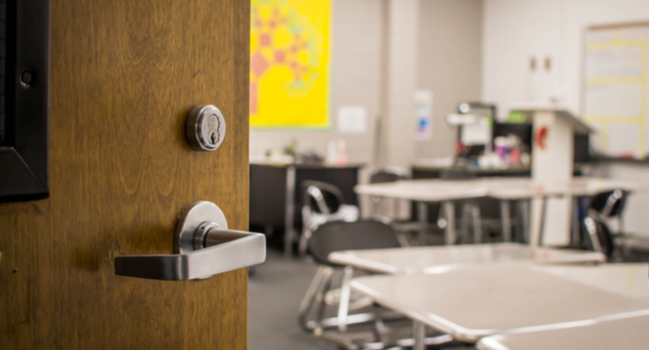
Tennessee School Adds an Extra Layer of Protection by Installing Door Locks
Schools are adding Nightlocks to their classroom doors as another layer of defense against potential gunmen or intruders.
- By Sherelle Black
- September 16, 2019
Schools are constantly looking for ways to protect their students from a mass shooting if one should ever occur.
In Tennessee, a first-grade class at New Union Elementary School decided to take their school’s safety in their own hands.
Nikki Alonso’s class decided they wanted to raise money to purchase safety locks for the school’s doors. The effort was a part of the school’s annual community service project.
In two weeks, 48 first-grade students raised more than $3,000 to purchase nearly 50 lock screws, supplied by the company Nightlock, with the help of donations from businesses in the community, reported WTVF.
The lock system includes a bracket on the door that slides into a bracket on the floor. A pin keeps the door from opening.
However, emergency responders can use a device to unlock the door from the outside.
“It does make me feel sad that we have to do this, but I feel like this has become a positive thing,” Alonso told WTVF. “I never wanted to leave my students where I felt like they couldn't be as safe as they wanted to be.”
Audrey Keele, who was a part of Alonso’s class, told the news station she was happy that their vision is now a reality.
“I never thought it would come to life, but school will be safer now. Someone could come in, but now, no one could come in,” Keele said.
With the installation of the locks, the school will have to revise its security plans.
A school district in Ohio also invested in the locks over the summer, spending more than $40,000 on more than 900 Nightlocks.
Parma City Schools not only installed them on classroom doors, but in offices and gym doors.
Parma City Schools Chief Operating Officer William Greene told Cleveland.com the locks are a great defense mechanism especially in situations where you have to respond quickly.
“Because you’re in a hurry, and looking at your resources inside of your room, you may not be able to find the desk, tables or chairs that are going to lock together and form a second wall of defense against that intruder,” Greene said.
About the Author
Sherelle Black is a Content Editor for the Infrastructure Solutions Group at 1105 Media.